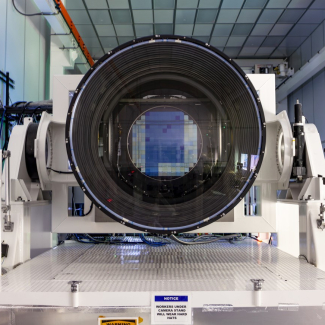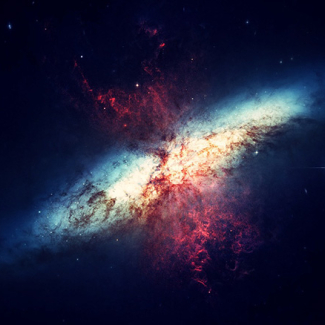
First light for SPIRou, exoplanet hunter
SPIRou, the new planet-hunting spectropolarimeter developed for the Canada-France-Hawaii Telescope (CFHT), has successfully recorded its first starlight. Ten years after it was first designed and following four intensive months of installation at CFHT, this international instrument in which France has played a leading role is on the point of initiating its scientific operations, namely the detection of exoplanets around nearby red dwarf stars and the study of newborn stars and planets. The design and construction of SPIRou involved a number of French laboratories. It was then integrated at IRAP1 (CNRS/CNES/Université de Toulouse III - Paul Sabatier) before being shipped to Hawaii.
- 1Institut de Recherche en Astrophysique et Planétologie (CNRS/CNES/Université de Toulouse III - Paul Sabatier), belonging to the Observatoire Midi-Pyrénées (OMP).
After being put through its paces at IRAP, the instrument was methodically disassembled and packed by CNRS teams, before being shipped and reassembled at CFHT, requiring calibration of the spectrograph's optics to micrometer precision. After ten years of hard work, a major milestone was passed on April 24, 2018 when SPIRou recorded its first light collected by the telescope from a star, AD Leonis, located some 16 light years from Earth in the constellation of Leo. The high activity of AD Leonis, its hugely energetic flares and the resulting spectral disturbances made the star an obvious target for these first on-sky tests, during which SPIRou was able to detect and measure the magnetic field present at its surface.
During the following few nights of this first on-sky exercise, SPIRou gathered an impressive collection of 440 spectra, while demonstrating some of its new capabilities in the process. In particular, SPIRou observed stars much cooler than the Sun known as red dwarfs, a stellar population comprising most of the stars in the neighbourhood of the Solar System, which SPIRou will carefully observe during its major observation program with the aim of finding evidence of nearby planetary systems. SPIRou also observed several hot stars, whose infrared spectra mainly show telluric lines caused by the Earth's atmosphere. Identifying and filtering out such telluric lines from the collected spectra is an essential step in making sense of the light from stars and deciphering the information it contains, in particular about the possible presence of planetary systems.
To detect planetary systems, SPIRou uses a technique known as velocimetry (also called the radial velocity method) that makes use of the Doppler effect to detect the tiny fluctuations in the velocities of stars that provide evidence of the presence of orbiting planets. SPIRou is expected to play a key role in future surveys of nearby planetary systems, in coordination with other ground- and space-based instruments such as ESA's TESS and PLATO satellites, the future James Webb Space Telescope (NASA/ESA), and the European Extremely Large Telescope (ELT).
After transport of the 10 tons of equipment from Toulouse to Hawaii by CNRS, SPIRou was installed and reassembled on the third floor of CFHT by a team of French and Canadian engineers and specialists, with logistical and technical support from CFHT. The operation required huge precision: cooled to a temperature of 200°C below zero, the SPIRou spectrograph is thermally calibrated to a precision of one thousandth of a degree so as to be able to detect the tiny spectral signatures induced in starlight by the presence of planets. Following the installation of its next-generation infrared detector (an H4RG TIS), SPIRou was cooled down for a new intensive session of laboratory and on-sky tests, in preparation for its major exploration programme of red dwarfs and stellar nurseries that is due to begin this autumn.
SPIRou was designed, funded and built by an international consortium of research organisations, laboratories and universities. In France, it involved CNRS, Université de Toulouse III – Paul Sabatier, Université Grenoble Alpes, Aix-Marseille Université and the Ile-de-France Region for its funding, together with a number of their laboratories and observatories working in the field of space and planetary sciences:
- IRAP (CNRS/CNES/Université de Toulouse III – Paul Sabatier),
- IPAG (CNRS/Université Grenoble Alpes),
- LAM (CNRS/CNES/Aix-Marseille Université),
- IAP (CNRS/Sorbonne Université)
- Observatoire Midi-Pyrénées (CNRS/UPS/IRD/CNES/Météo-France)
- Observatoire de Haute-Provence (CNRS/CNES/AMU),
- Observatoire des sciences de l'Univers de Grenoble (CNRS/Université Grenoble Alpes/IRD/Météo France/Irstea)
- Institut Pythéas (CNRS/CNES/AMU).
The consortium also involves Canada, Switzerland, Brazil, Taiwan, Portugal and the CFHT.

Part of a SPIRou spectrum of the star AD Leonis, recorded during the instrument's first night-time observations.

Overall view of the SPIRou spectrograph and its optical components, preceding closure of its cryogenic chamber.


